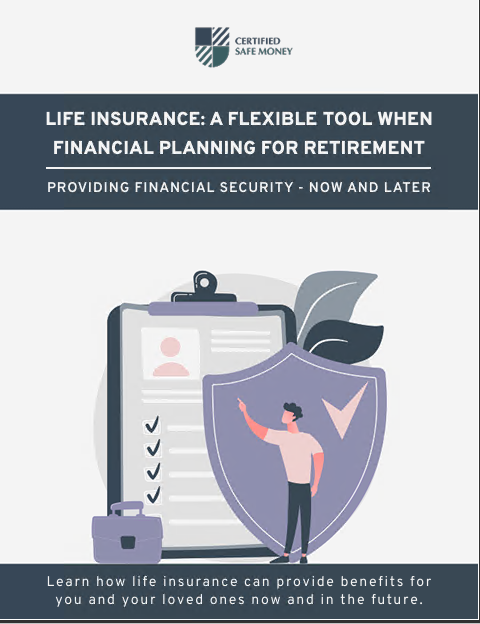Beyond the Nest Egg: Building a Diversified Retirement Income Stream
Key Takeaways:
- Diversifying retirement income sources helps mitigate risks and ensures financial stability during retirement.
- Strategies for building a diversified retirement income stream include mixing traditional and non-traditional assets, utilizing guaranteed income products like annuities, and maximizing income sources such as Social Security and employer-sponsored retirement plans.
Retirement planning has evolved beyond relying solely on a nest egg or pension. Today, retirees seek to create a diversified retirement income stream to ensure financial stability and security in their golden years. In this comprehensive guide, we explore strategies and investment options for building a diversified retirement income portfolio that can withstand market fluctuations and provide sustainable income throughout retirement.
Why Diversify Your Retirement Income?
Diversifying retirement income is essential for mitigating risks and ensuring financial stability during retirement. By spreading investments across various asset classes and income sources, retirees can reduce dependence on any single source of income and better withstand market volatility. Diversification also helps to optimize returns and provide a steady stream of income to cover living expenses and unexpected costs in retirement.
Strategies for Building a Diversified Retirement Income Stream
a. Mixing Traditional and Non-Traditional Assets: A diversified retirement income stream may include a combination of traditional assets like stocks, bonds, and cash equivalents, as well as non-traditional assets such as real estate investment trusts (REITs), annuities, and dividend-paying stocks. By diversifying across different asset classes, retirees can capture returns from various market segments and reduce overall portfolio risk.
b. Employing the Bucket Approach: The bucket approach involves dividing retirement savings into different “buckets” based on time horizon and risk tolerance. Each bucket is allocated to different investment vehicles, such as short-term bonds for immediate income needs, diversified mutual funds for medium-term growth, and dividend-paying stocks for long-term wealth accumulation. This strategy helps retirees manage cash flow needs while maintaining a balanced portfolio.
c. Utilizing Guaranteed Income Products: Annuities are financial products designed to provide guaranteed income for life or a specified period. Immediate annuities, for example, offer regular payments in exchange for a lump sum investment, while deferred annuities allow investors to accumulate funds tax-deferred until withdrawals begin. Including annuities in a retirement income strategy can provide a reliable source of income to cover essential expenses and mitigate longevity risk.
How to Create a Balanced Retirement Portfolio?
Creating a balanced retirement portfolio involves allocating assets across different investment categories to achieve a mix of growth, income, and capital preservation. Retirees should consider their risk tolerance, time horizon, and income needs when constructing their portfolio. A balanced portfolio may include a combination of:
- Equities for long-term growth potential
- Fixed-income securities for income and stability
- Cash equivalents for liquidity and emergency funds
- Real assets like real estate and commodities for diversification and inflation protection
Maximizing Retirement Income Sources
a. Social Security Optimization: Maximizing Social Security benefits is a critical component of retirement income planning. Retirees can optimize their benefits by delaying claiming until full retirement age or even beyond, depending on individual circumstances. Spousal claiming strategies, file and suspend options, and survivor benefits should also be considered to maximize overall benefits.
b. Employer-Sponsored Retirement Plans: Employer-sponsored retirement plans like 401(k)s and 403(b)s offer tax-deferred savings opportunities for retirement. Retirees should take advantage of employer matches, contribute regularly to their accounts, and consider options for rolling over funds into an individual retirement account (IRA) for greater flexibility and investment choices.
c. Personal Savings and Investments: Personal savings and investments, including taxable brokerage accounts, IRAs, and other investment vehicles, play a crucial role in retirement income planning. Retirees should maintain a diversified investment portfolio tailored to their risk tolerance, investment objectives, and retirement timeline. Regular contributions, systematic withdrawals, and periodic rebalancing can help optimize returns and manage risk over time.
Managing Risks in Retirement
a. Market Risk: Market volatility can pose a significant risk to retirement income. Retirees should adopt a long-term perspective, diversify their investments, and periodically review and adjust their asset allocation based on market conditions and changing needs.
b. Inflation Risk: Inflation erodes purchasing power over time, affecting retirees’ ability to maintain their standard of living. To hedge against inflation risk, retirees should consider investments with growth potential, such as equities and real assets, as well as inflation-protected securities like Treasury Inflation-Protected Securities (TIPS).
c. Longevity Risk: Longevity risk refers to the risk of outliving one’s retirement savings. Retirees can mitigate this risk by incorporating guaranteed income products like annuities into their retirement income strategy, delaying Social Security benefits, and maintaining a diversified investment portfolio designed to provide sustainable income throughout retirement.
Conclusion
Building a diversified retirement income stream is essential for achieving financial security and peace of mind in retirement. By implementing a strategic mix of investment options, optimizing income sources, and managing risks effectively, retirees can create a sustainable income stream to support their lifestyle and enjoy a fulfilling retirement journey. It’s never too early to start planning for retirement, and a diversified income strategy can help retirees navigate the uncertainties of the future with confidence and resilience.
Contact Information:
Email: hollingsworthcsa@aol.com
Phone: 2564383071
Bio:
Kathy Hollingsworth – Federal Employee Benefits Specialist
Originally from Birmingham, Kathy received her advanced education at Birmingham-Southern College. Kathy’s professional career began with 30 years in the media industry (radio and television), but will end serving senior citizens. As director of a senior center for five-and a half years at the largest senior center in central Alabama, Kathy has devoted her life to meeting the needs of senior citizens. Due to continuing education and working with companies that specialize in finding the best financial products, Kathy stands ready to help her clients find solutions to the problems that arise while in retirement and planning for retirement retirement.
For the last eighteen years, Kathy, a Federal Employee Benefits Specialist, has assisted in helping federal employees make wise, frugal retirement decisions.
Kathy also became a Registered Rep in 2018 (CRD 6832692) and an Investment Advisor Representative (Fiduciary) in 2021. In addition, Kathy is a licensed mortgage originator (License #212553), specializing in VA, FHA and Conventional mortgage loans.
Kathy has written many articles for the Montgomery Area Council on Aging, Montgomery Advertiser, and Alabama Gerontological Society on the subject of seniors. Kathy was the keynote speaker at Alabama’s State Capitol in Montgomery for the State Combined Campaign Salute to Seniors in 2005.
Kathy also writes articles on Federal Benefits and Insurance subjects.
A Certificate of Recognition was awarded to Kathy in 2005 by Governor Bob Riley for her service to state, family and community.
Every free moment Kathy gets is spent with her grandson Konner and two dogs, Sallie, and Sassy.














